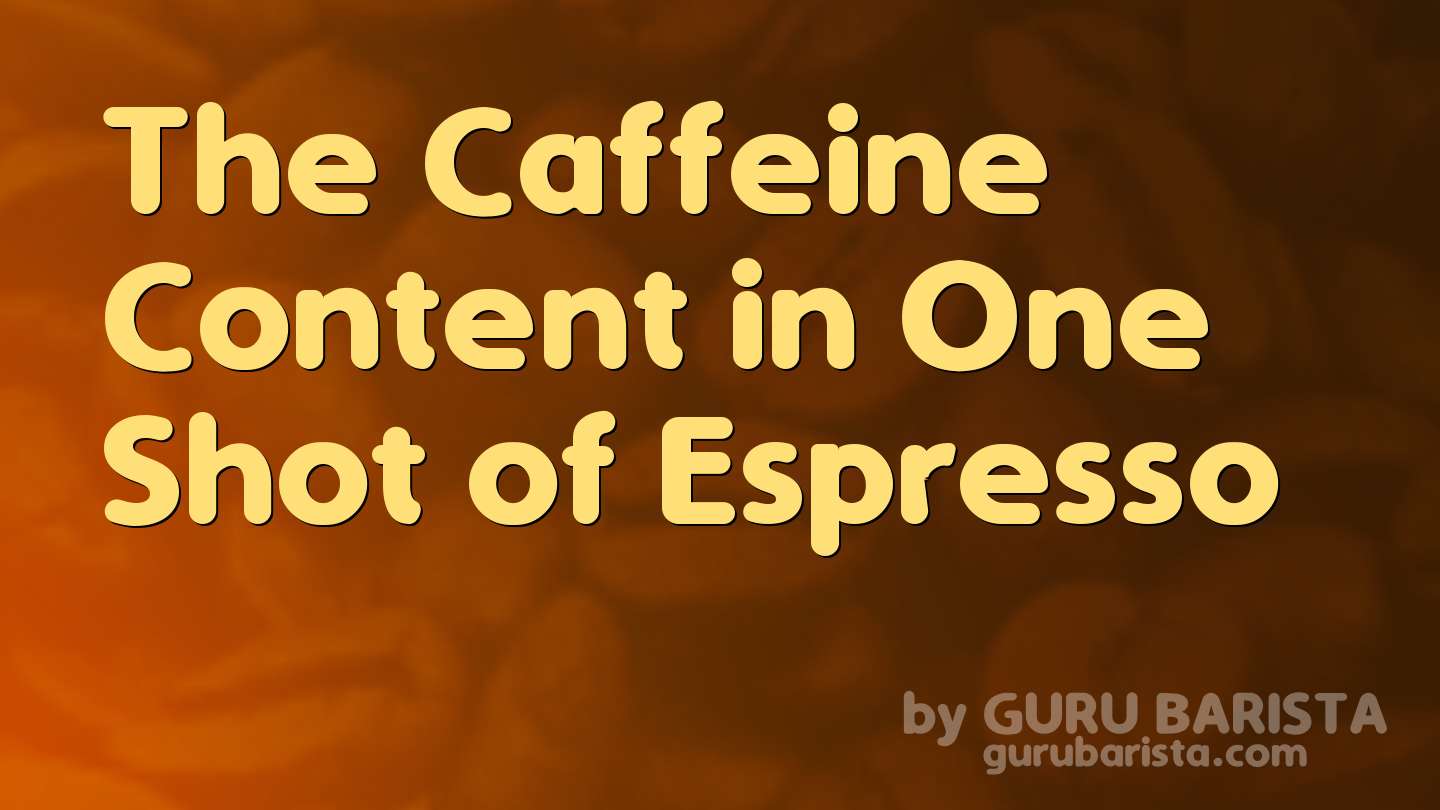The Caffeine Content in One Shot of Espresso
Many people assume that a shot of espresso contains more caffeine than a cup of brewed coffee. However, this is a common misconception. The truth might surprise you!
Caffeine in Espresso vs. Brewed Coffee
While espresso is a concentrated form of coffee, it actually contains less caffeine per serving compared to a cup of brewed coffee. An average eight-ounce cup of brewed coffee contains approximately 96 milligrams of caffeine. In contrast, a one-ounce shot of espresso contains about 64 milligrams of caffeine. You can learn more about caffeine differences in espresso and other drinks here.
This difference in caffeine content stems from the brewing methods. Espresso uses finely ground coffee and pressurized water, resulting in a highly concentrated shot. Brewed coffee, on the other hand, uses a drip method with coarser grounds and more water, which distributes the caffeine over a larger volume.
Caffeine Content in Popular Coffee Drinks
| Drink | Ounces | Caffeine (mg) |
|---|---|---|
| Single Shot Espresso | 1 | 64 |
| Double Shot Espresso (Doppio) | 2 | 150 |
| 8 oz Brewed Coffee | 8 | 96 |
| Cappuccino | 6 | 75 |
| Latte | 8 | 75 |
| Mocha | 8 | 90 |
Arabica vs. Robusta Beans
The type of coffee bean also influences caffeine content. Arabica beans generally have less caffeine than Robusta beans. While most espresso in America, including chains like Starbucks, is made with Arabica beans, classic Italian espresso often uses Robusta beans, which add a robust flavor and thicker crema due to their higher caffeine content.
For instance, Arabica beans contain about 1.2% caffeine, whereas Robusta beans boast nearly double that at 2.2%. If you brew espresso with Robusta beans, you’ll end up with a more caffeinated shot compared to one made with Arabica beans.
Factors Influencing Caffeine Extraction
Several factors affect how much caffeine ends up in your cup:
- Grind Size: Finer grounds provide more surface area, extracting caffeine more efficiently.
- Water Temperature: Near-boiling water (195-205°F) optimally extracts caffeine.
- Brewing Time: Espresso shots are brewed quickly (20-30 seconds), capturing nearly all available caffeine.
- Bean Type: As mentioned, Robusta beans have more caffeine than Arabica beans.
Why Does Espresso Feel Stronger?
Although an espresso shot has less caffeine than a standard cup of coffee, it is more concentrated. Because of this, you consume it faster, delivering a quicker caffeine kick. This rapid consumption leads to a more immediate and intense feeling of alertness compared to sipping on a brewed coffee over time.
Brewing Espresso at Home
Creating a great shot of espresso at home can be both an art and a science. Here are the basic steps:
- Grinding and Weighing: Use a fine grind. A single shot requires about 7-9 grams of coffee. Consider checking the best methods for making espresso at home.
- Pre-Infusion: Run hot water through the machine to ensure optimal temperature.
- Extraction: Once the coffee is tamped into the portafilter, brew for 20-30 seconds.
- Observation: The result should have a balanced flavor with a golden crema on top.
Health Benefits of Espresso
Espresso is not just a delicious pick-me-up; it offers several health benefits too. It is rich in antioxidants, which can help boost your immune system. Regular consumption of espresso has also been linked to a reduced risk of strokes and heart disease.
Moreover, espresso can enhance your workout performance. Consuming a shot before hitting the gym can improve endurance and energy levels, making your exercise session more effective.
Reducing Your Caffeine Intake
If you’re concerned about your caffeine consumption, there are several steps you can take:
- Monitor Intake: Keep track of how many cups you drink.
- Reduce Gradually: Cut back a little each day.
- Switch to Decaf: Enjoy the taste without the high caffeine content.
Conclusion
In conclusion, while a shot of espresso does contain a significant amount of caffeine, it is not more than a standard cup of coffee when compared ounce-for-ounce. However, due to its concentrated nature, it provides a quicker caffeine hit, which is often why it feels stronger. If you’re curious about different espresso drinks, explore more on Blonde Espresso Types.
So, next time you’re in need of a quick jolt of energy, you might want to consider how fast you plan to drink your coffee. Whether you prefer the leisurely sips of a brewed coffee or the intense, rapid consumption of an espresso shot, understanding the caffeine content can help you make informed choices. For a delicious twist, you might like trying out a recipe to make an Espresso Martini at home.
- Dunkin’ Donuts Secret Menu Surprises 2025 - January 31, 2025
- Starbucks’ Must-Try Secret Menu Creations for 2025 - January 31, 2025
- Tim Hortons Coffee Menu Explored 2025 - January 31, 2025
